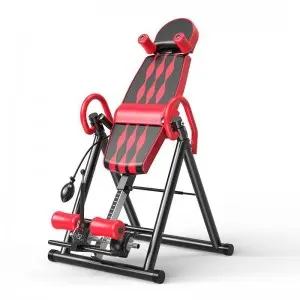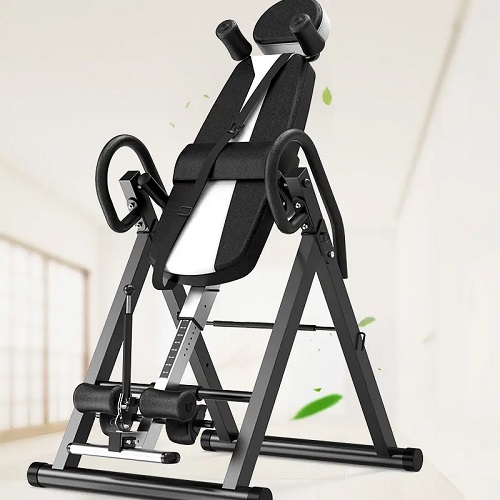In the field of modern rehabilitation medicine, spinal health is receiving increasing attention. As a tool to assist in spinal rehabilitation, the handstand, with its unique working mode, offers a brand-new solution for spinal decompression and muscle relaxation. From a professional perspective of physical therapy, this device is helping many people improve their spinal health.
The spine of the human body is subjected to continuous pressure during daily activities. Maintaining a sitting or standing posture for a long time or having improper posture habits can all lead to compression of intervertebral discs and muscle tension. The handstand changes the direction of the body and uses gravity to naturally pull the spine, creating a temporary decompression space for the intervertebral discs. This gentle traction is different from mechanical strong stretching; instead, it allows the body to gradually relax under the influence of natural gravity.
When using a handstand, the spine is at an appropriate inverted Angle, and the pressure between the vertebrae is relieved. This decompression state helps promote nutrient exchange between intervertebral discs and improve local blood circulation. For intervertebral discs that have become flattened due to long-term pressure, temporary decompression can create favorable conditions for restoring elasticity. At the same time, the tense muscle groups around the spine can also have the opportunity to relax in this posture.
The improvement of muscle balance is another important benefit. Unilateral exertion or poor posture in daily life can lead to unbalanced development of the back muscles. Handstand exercises can help reactivate those suppressed muscle groups and promote the coordinated exertion of the front and back, as well as left and right muscle groups. This holistic muscle re-education is crucial for maintaining spinal stability.
The cultivation of posture awareness should not be overlooked either. In an inverted state, users will naturally pay more attention to the arrangement and symmetry of their bodies. This enhanced physical awareness will extend into daily life, helping people maintain correct standing and sitting postures more consciously and reducing the adverse pressure on the spine from the source.
In terms of pain management, the handstand can provide natural relief. Many back discomforts are related to intervertebral disc pressure and muscle tension. By doing handstands regularly, these pressures are temporarily released and the muscles are relaxed, thereby reducing the related discomfort. This non-pharmaceutical pain management approach is gaining increasing recognition from rehabilitation professionals.
Safety has always been the top priority. The modern inverted stand design fully takes into account the stability of use. The adjustable Angle setting allows users to start from a smaller tilt and gradually adapt to the inverted feeling. This progressive training approach ensures that the rehabilitation process is both effective and safe, making it suitable for people with different physical conditions.
The control of usage frequency and duration is very important. Physical therapists usually recommend personalized usage plans based on individual circumstances. Short-term, regular use is often more effective than a single, prolonged use. This moderate way of using it not only brings the benefits of handstands but also avoids the risks that may arise from excessive practice.
The effect is even better when combined with other rehabilitation measures. The handstand is best incorporated as part of a comprehensive rehabilitation program, combined with core muscle training, flexibility exercises and other physical therapy methods. This multi-pronged approach can promote spinal health from various perspectives and achieve a better overall rehabilitation effect.
Individual differences need to be fully considered. Everyone’s spinal condition and physical condition are different, so their reactions to the handstand will also vary. During the usage process, pay close attention to your body’s feedback and adjust the usage method and frequency according to your feelings to achieve the most suitable rehabilitation effect for yourself.
As an auxiliary tool for spinal rehabilitation, the value of the handstand lies in providing a natural and passive way to relieve spinal pressure. When combined with traditional rehabilitation methods, it can help people better manage their back health and improve their quality of life. Just like any rehabilitation tool, only by using it wisely and prudently can this innovative device bring out its maximum benefits and safeguard spinal health.
Post time: Sep-22-2025



